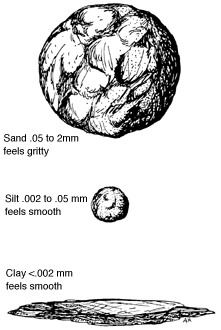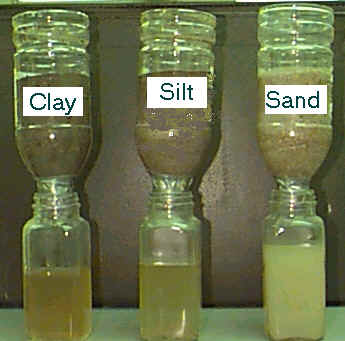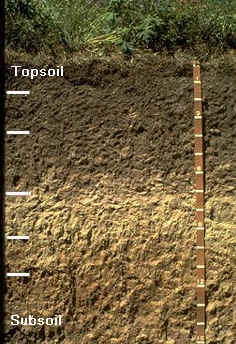Sand is mainly rock fragments and hard minerals. It contains few plant nutrients.
Sand is the largest of the three types of soil particles.
Sand in the soil (in moderate amounts) improve drainage and aeration.


Silt is ground up sand (quartz) and rock minerals.
Silt is between sand and clay in terms of size.
Silt contains few nutrients by itself, but it can have nutrients clinging to its surface.
Clay is minerals that also have varying amounts of plant nutrients such as potassium, calcium, magnesium, iron, etc.
Clay is the smallest soil type.
Clay in the soil in large amounts makes for harder plowing, and poorer drainage, but it does assure good water holding capacity.

